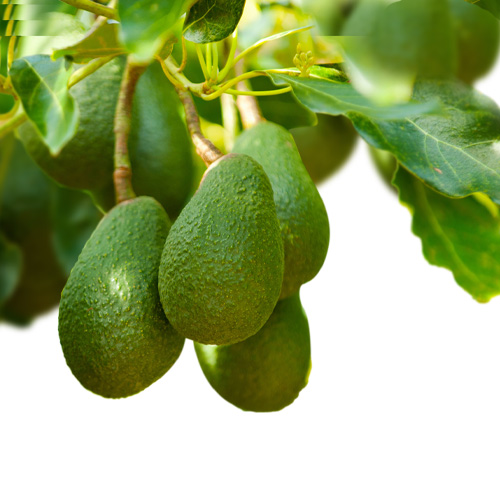Avocado, a nutrient-rich and uniquely flavored fruit, requires specific cultivation techniques to achieve high-quality yields. First, when discussing suitable soil and locations for avocado planting, one should choose well-drained, organic matter-rich sandy loam or loam soil with a pH between 5 and 7, ranging from slightly acidic to neutral. This soil structure is beneficial for root development and nutrient absorption. For the location, it is important to select a wind-protected, sunny area with some elevation variation to reduce pests and diseases and improve fruit quality.
Next, environmental temperature and sunlight are critical factors affecting avocado growth, as sudden temperature changes can hinder the growth of avocado trees. As a tropical crop, avocado favors warm and humid climates and can survive in temperature ranges from -4 to 40°C. Extreme low or high temperatures are not conducive to its growth. Additionally, sufficient sunlight is essential for avocado flowering and fruiting, requiring at least 6-8 hours of direct sunlight daily to ensure adequate photosynthesis and promote fruit development.

Avocado varieties are numerous, and their growing environmental requirements vary significantly. Therefore, farmers need to carefully analyze the limiting factors present in their specific fields to select the most suitable avocado variety for their local ecological environment.
Regarding the number of avocado trees per hectare, scientific and reasonable planning is fundamental for improving land use and yield. Generally, depending on variety characteristics and soil conditions, the spacing between avocado trees should be between 6-12 meters, mainly determined by the desired plant density and the chosen variety. The most common planting distances are 7 x 7 meters (23 x 23 feet), 10 x 5 meters (33 x 16.5 feet), or 6 x 3 meters (20 x 10 feet). Typically, this results in a plant density of 200 plants per hectare or over 500 plants, ideally with a preferred planting distance of 3 x 6 meters or 3 x 5 meters. Notably, intercropping avocado with orange trees is a strategic approach, especially in the early years. Orange trees can naturally shelter young avocado trees, mitigating adverse effects from strong winds and intense sunlight, thereby promoting healthy avocado growth.
Finally, it is worth mentioning that the proper selection and use of water retention agent in avocado cultivation can significantly enhance soil water retention capacity, reduce irrigation frequency, and cut costs. AvoSorb™ water retention agent, a market leader, works optimally when mixed with the substrate at a ratio of 1:200. This ratio effectively retains soil moisture while avoiding the adverse effects of overuse, providing strong support for stable avocado growth. Through scientific cultivation and reasonable management, avocado planting can become an environmentally friendly and efficient agricultural project.